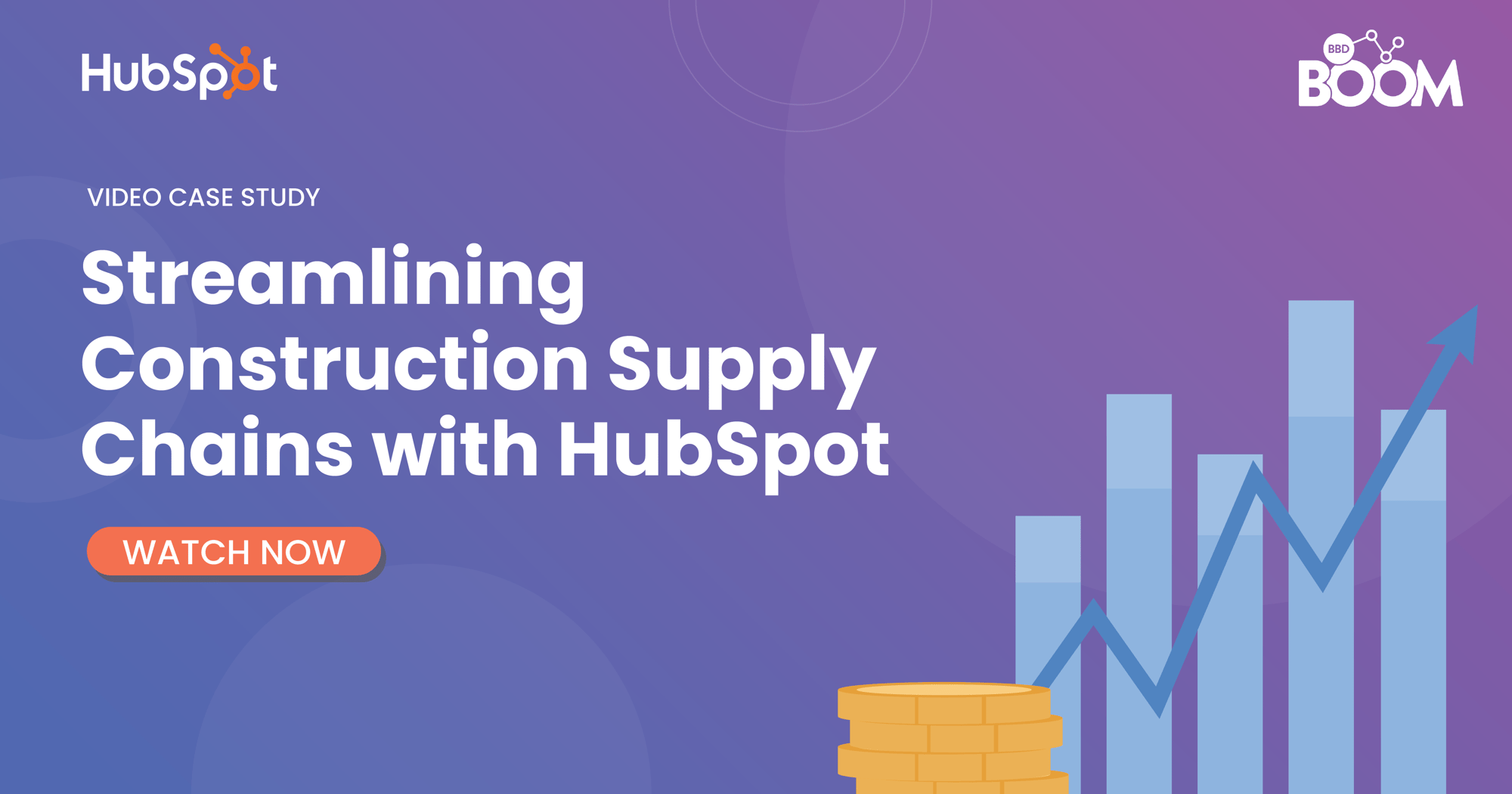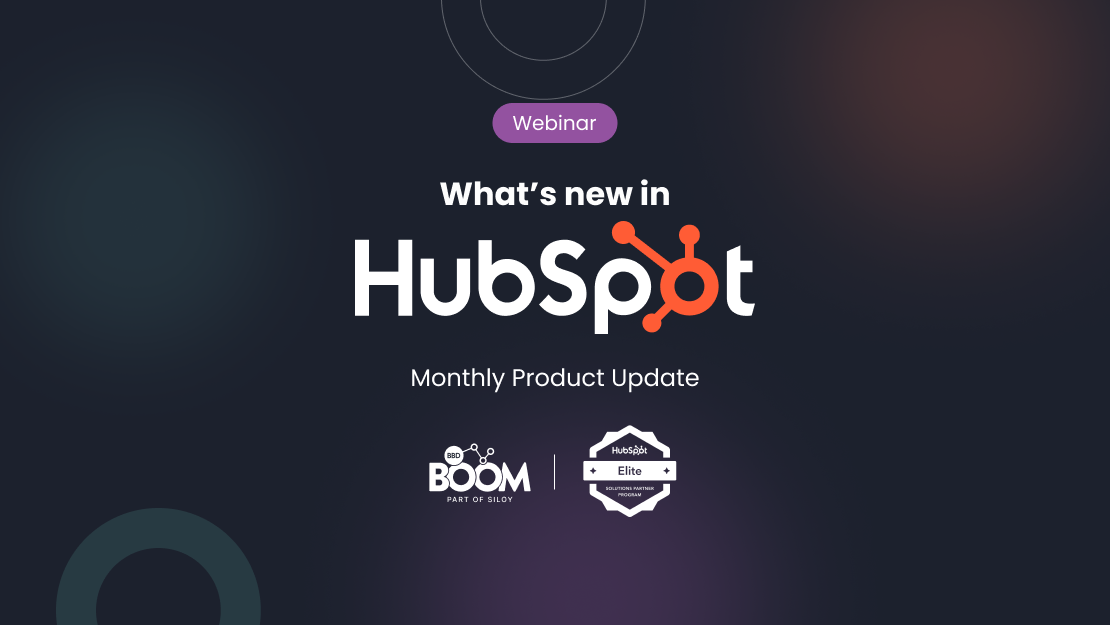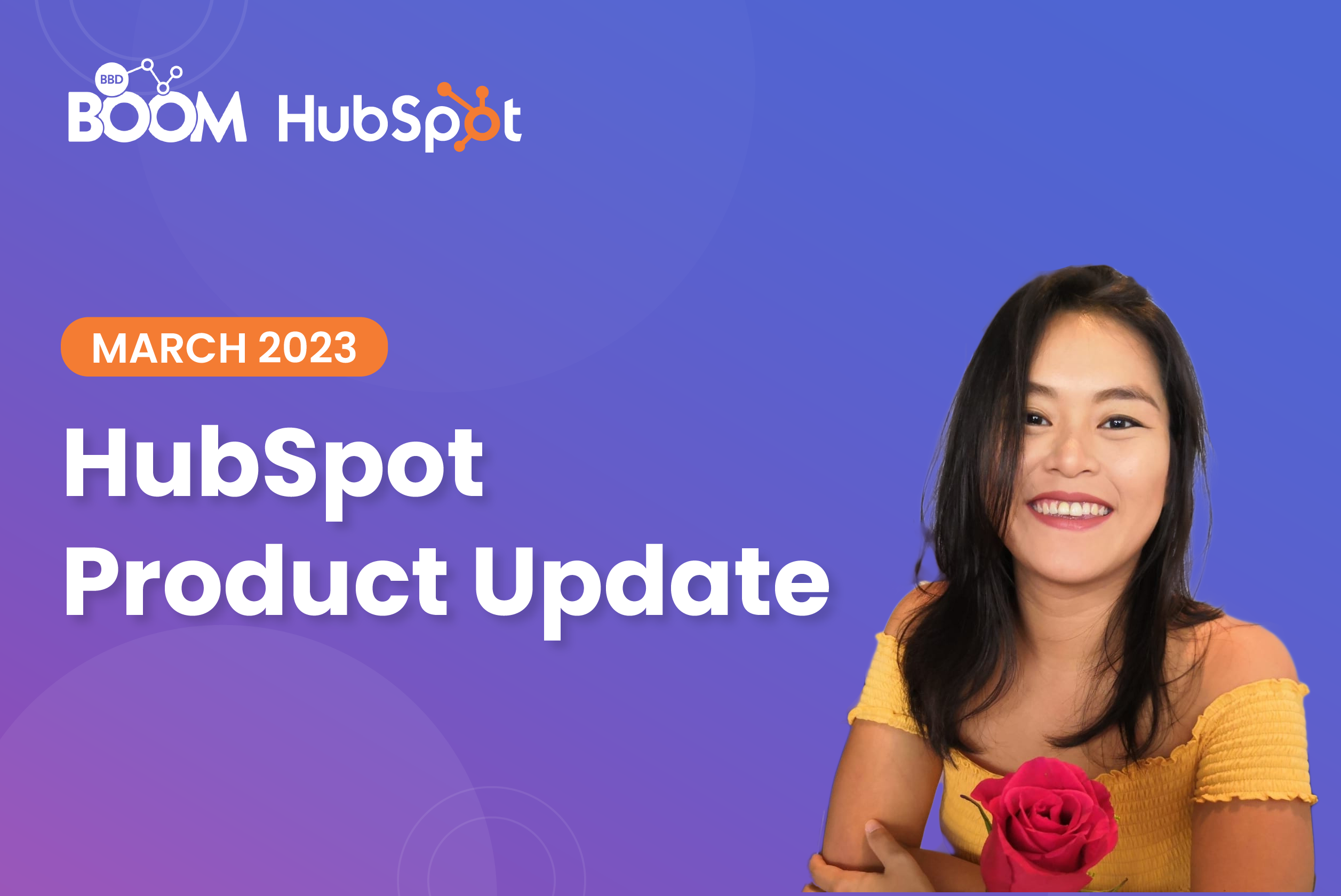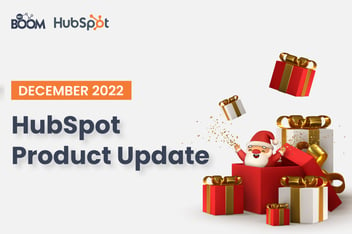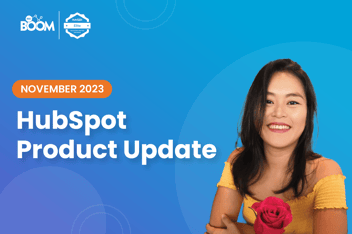Welcome to our HubSpot Product Spotlight for March In this blog, we’ll explore some of the team's favourite HubSpot updates from the last month. Ready? Let’s dive in!
Now Live
These are all the features now live and ready to use in your HubSpot portal.
Customer Journey Analytics is here
What is it?
Today, HubSpot is launching Customer Journey Analytics to help marketers optimize any part of the buyer's journey. This powerful new reporting tool lets you measure the journey between any starting point and any end point in the journey. You can see how long it takes for leads and customers to complete a journey, where they're dropping off in the journey, and identify which pathway will help you reach your goals -- no matter what they are.
Why does it matter?
Marketing is getting harder. That's because there's more complexity in the buyer's journey than ever before.
With so many channels for leads to engage with a brand, and so many key milestones in the journey, it's not only become harder to understand which paths lead toward marketing success, it's become harder to identify where you can optimize your marketing operation.
Customer journey analytics pulls together all your HubSpot data to let truly understand which pathways are performing the best so that you can identify where your success is coming from and where you can optimize your campaigns and digital assets.
Upload images to products in the Product Library
What is it?
You can now upload your product images to products in the product library.
Why does it matter?
This update makes adding images to products quick and easy all from one app. Previously, to add an image to a product you would need to get the image's URL, either from a website or an image hosting service, and paste that URL manually into the product’s image URL field in the product editor for the product you want to edit.
Hide Properties in the Data Quality Command Center
What is it?
Hiding properties is the ability to hide a property from property insights in the data quality command center. This allows you to monitor and focus on the properties with issues that are most relevant to your business.
Why does it matter?
Today, the data quality tools provide insight into all properties in HubSpot. However, not all properties are critical or actively used by a business and need to be monitored. This new functionality allows for more flexibility around which properties show as issues and in property insights trends.
New Single Report Viewer Layout
What is it?
The Single Report viewer is getting a new layout!
Why does it matter?
Reports are now front and center, giving the proper prioritization and making it easy to see what is most important. New tabs make it simple to see details without taking up unnecessary room.
Drag and drop version of the collaboration sidebar in workflows
What is it?
The collaboration/commenting sidebar enables marketers to quickly access a handful of useful collaboration and productivity tools across a variety of tools within HubSpot. With this upgrade we're introducing a smaller, movable version of the commenting sidebar that can be placed in the ideal location and be more convenient for marketers.
Why does it matter?
Historically the collaboration sidebar has been static; it's fixed to the right-hand side of the screen, with the only customization option being to hide it completely. Additionally, the sidebar takes up the full height of the screen. We wanted to optimize how we use the space by introducing a smaller, draggable version of the sidebar, which can be placed on any edge of the screen.
You can now associate 'Pop-up CTAs' with your HubSpot Campaign
What is it?
You can now associate a new type of CTAs with your Campaign.
Within the Campaigns product, this new type of CTA is called CTAs (Beta), whilst the original CTAs keep the name of 'Calls-to-action'. Please note that the naming convention will be adapted over the coming months.
The new CTA tool helps you break through the noise and better capture your website visitors' attention, unlocking your website as a channel for your marketing campaigns. Thanks to a brand new Drag and Drop editor and a range of modules such as form, rich text, image or button, you get plenty of flexibility to create different types of pop-ups; you can now promote an event or a webinar, capture leads or provide other types of helpful on screen messaging. You get a wide range of options to style your pop-ups to make them beautiful and impactful while also ensuring they're consistent with your website and brand guidelines. Thanks to a selection of templates creating new pop-ups takes just a couple of clicks. More details can be found here.
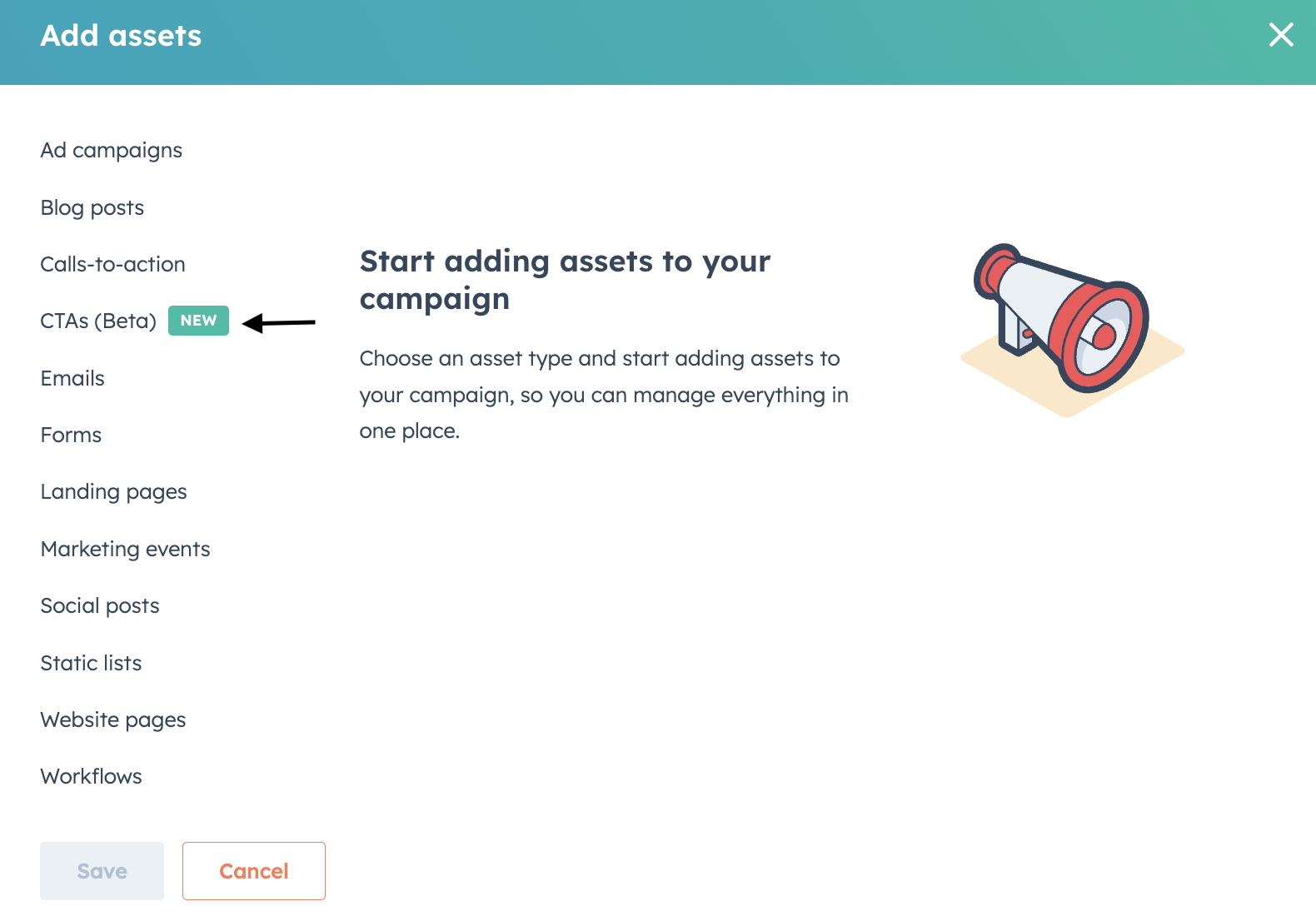
Use data from event integrations in customer journey reports
What is it?
The App Marketplace’s recommended event integrations are now available to use with customer journey analytics so you can visualize and gain valuable insights into how events play a role in the customer journey.
Built on HubSpot’s Marketing Events API, these integrations sync event data from popular event software to HubSpot’s marketing events object. From there, you can use the data––including details such as contacts’ registration, cancellation of registration, the event's name, duration of attendance, and more–to segment lists, create reports, and more within HubSpot. Available integrations include:
Why does it matter?
With so many ways for leads to engage with your brand, you need a new type of reporting to calibrate your marketing strategy. It can be especially difficult to gain visibility into how your events play a role in your customers’ journeys and impact your lead pipeline.
Now, you can use HubSpot’s recommended event integrations to sync event data to HubSpot and use it in customer journey reports, so you can hone in on any part of the customer journey to understand what path drives high quality leads.
Reply to Emails on the HubSpot Mobile App
What is it?
Sales reps on the go can now send emails from the HubSpot mobile app. With this update, you can use the HubSpot mobile app to send and respond to emails, and your email communications will be automatically logged and tracked in the HubSpot CRM.
Why does it matter?
Until now, sales reps in the field using the HubSpot mobile app have had limited email capabilities. You could only send new emails to existing contacts, for example, and couldn’t respond to replies, which often meant using third party email clients. The result? Slower response times, lower productivity, and frustration with the mobile experience. With this release, you can now send and reply to emails from the HubSpot mobile app. All your email communication will be automatically logged in the CRM, so you don’t have to spend time manually logging your emails or worry about communications getting lost.
Receive Calls In HubSpot
What is it?
With this new feature sales and service reps can answer incoming calls, manage missed calls, and listen to voicemails inside HubSpot.
Why does it matter?
There is quite a bit of data sales and services reps need to manage and access when a customer is calling in. HubSpot does a great job centralizing that information, but not enough. Users told us they have to bounce back and forth between platforms, which causes confusion, especially while maintaining a conversation.
With this new feature, users won't need to work multiple systems all at once anymore. With inbound calling, they can now manage the active call, review any caller context, and take notes – all without ever having to leave the HubSpot app.
Customers will also be able to leave a voicemail. Reps will be notified and be able to listen to the voicemail, review the transcript, and of course, return the call.
Teams Language Updates
What is it?
We’re making updates to Teams language and removing Partitioning from the HubSpot vocabulary, both in-app and on the Pricing page:
1) Primary team and additional team → main team member and extra team member
2) Parent/child team → ordering teams underneath another team and nesting them
3) Hierarchical teams → organize teams
4) Partitioning → Limit access to content and data
5) Content Partitioning → Limit access to content
Why does it matter?
What we’ve found is that the meaning of Partitioning and hierarchy and language within Teams was confusing. Simple and clear language is key to ease of use for a product, so that's why we're making these updates.
We wanted to use language that showed the clear difference between the kinds of team members. What kind of member you are determines what you can do with a team.
Partitioning was a word we added onto the Teams functionality to describe the ability to restrict access to pieces of data by assigning them to users or teams. But there are big differences in the intended meaning of Partitioning.
Real-time sales notifications now delivered through HubSpot
What is it?
Real-time sales notifications (i.e. email opens, clicks, document views, and contact or company revisits) will now be delivered through HubSpot's notifications platform, rather than through HubSpot's chrome extension.
Why does it matter?
Google has changed its requirements for how Chrome extensions can function. As a result, HubSpot's old way of delivering sales notifications through the HubSpot Sales extension is no longer feasible.
Social Composer Full Page Experience
What is it?
We have a new and improved full page editing layout for creating social posts.
Why does it matter?
Social media content creators have had difficulty discovering new and/or existing features within the composer due to its current layout. Now with the full page you can:
1) more quickly create and edit posts to publish across all your pages
2) more easily preview what your post will potentially look like on the social network
3) more clearly see existing features and new features at your fingertips for social post creation
4) more easily learn how to create social media posts, as the new experience follows a familiar pattern & UI in other content creation tools within HubSpot's ecosystem
Drag and Drop Modules in Blog Post Editing
What is it?
This feature allows you to drag and drop modules into the rich text area of your blog posts.
Why does it matter?
Users often try to hack their way to adding rich content to their blog posts, which ends up being time-consuming and often requires the help of a developer. This new feature gives you the ability to add modules to your blog posts, which makes the blog editing experience simpler and more intuitive.
Clean up your workflow
What is it?
Use "Clean up" recommendations to optimize your workflow branches to improve your workflow's performance and simplify how it looks.
Why does it matter?
Workflow branching is a powerful tool for adding powerful logic to automation. But with two different branch actions and a huge variety of filter options, it can be hard to know which branch is the best for your use case, and large branches can get unruly and become difficult to manage. The new "Clean up" optimization will alert you if there are alternate branching options available.
The recommendations will not change the logic or behavior of your workflow. Instead they will help optimize the structure and visualization of your existing branches, to create the most concise and simple representation of your branching logic that's possible. Having more concise branches can also reduce the number of steps in a workflow, which will improve the workflow's performance by helping it run more quickly.
Resolvable Comments
What is it?
The ability to resolve comments posted in the collaboration sidebar.
Why does it matter?
One of the main benefits of commenting is for colleagues to suggest changes to the current asset being worked on. As these are actioned, “resolved” comments hang around, and today there is no way to hide these or make it clear to stakeholders that this work is complete. This makes it harder to find the more important “unresolved” comments.
Manage Existing Values" Now Available across All Objects and for Record ID Imports
What is it?
Importers have long had the ability to skip known values within the CRM as they're importing data; however, this functionality was limited in two ways:
- It was only available on contact and company imports, not imports of other object types.
- You couldn't leverage this if you were using a Record ID property as your unique ID within import.
We've now removed these requirements so the ability to not overwrite existing values in the CRM can be leveraged for all objects and within import files that include a Record ID column.
Why does it matter?
With new features like create/update only imports, custom unique IDs, and more, import is no longer just a tool for data ingestion – it's a tool for bulk data management. Extending "Don't overwrite" support to Record ID imports and all HubSpot objects allows admins to manipulate data with more control.
For example, say you’re updating a spreadsheet that includes deal amount values, and you don’t want that the values in the spreadsheet to override any existing known deal amounts in the CRM. With this update, you can now select “Don’t overwrite” and HubSpot will ignore the deal amount values in your import.
Required questions in playbooks
What is it?
Playbook authors and editors can now make questions required. When a question in a playbook is required, users will be unable to log an engagement or note, or update linked CRM properties until the question has been answered.
Why does it matter?
In some cases, you may want to require playbook users to provide a minimum amount of specific information before using the playbook to log an engagement or note. This is now possible by including required questions in your playbooks.
New Filters for Date Properties on Object Index Pages
What is it?
When filtering by date on your object index pages, you now have the option to apply "is more/less than [x] days ago" criteria.

Why does it matter?
Prior to this release, filtering by dates on a rolling basis in the object index pages was pretty tough to do. For example:
- If you wanted to see all of your contacts who were created in the last 7 days, you had to select a date last week in the calendar input, then update that filter every day so that it continued to represent the previous 7 days from today's date. 👎
By allowing you specify the number of days before or after a specific date, you can easily segment for the records that were created in a given time frame. Using the same example above, you'll now be able to apply the following criteria:
- [Create Date] [is less than] [7] [days ago]
From there you can just save the view and move on to your next to-do list item, saving you time and unnecessary frustration!
Property Validations for Custom Text, Number, and Date Picker Properties
What is it?
With our property validations tool, you can define granular rules for property values, giving you more control over the data that enters your CRM.
Why does it matter?
As an admin, you care about the quality and integrity of your CRM data but consistent, reliable data isn’t a high priority for everyone that enters data into the CRM. Historically you haven’t had been able to control what other users enter, other than to document processes and rules that end up ignored or forgotten. The result? Inconsistencies start piling up, eroding trust and confidence in your data and ultimately making your job harder.
Now you can set validation rules for custom text, number, and date picker properties. When set, these rules act as guardrails for properties, preventing users from deviating from your requirements when entering data (e.g., only numeric values can be entered and no special characters). That means a cleaner, more reliable database and higher quality data your teams can count on to make tough business decisions.
Increased Visibility of Record Merges
What is it?
A new property will be visible that shows the IDs of records that have been merged into the record you’re viewing. The property will be available for all objects that can be merged, including contacts, companies, deals, tickets, and custom objects. With this property, you will be able to create a list of all of the records of a specific type that have been merged (e.g., all tickets that have been merged). It will also be available throughout HubSpot in tools such as the custom report builder and workflows.
Why does it matter?
Until now, you've needed to scroll through a record's activity feed or track down the merge filter to see if a record was impacted by a merge. While manageable for a single record, this process hasn't been ideal for those times when need a big-picture view of merges. Reps work with more data coming from more places every single day, and understanding the history of a record is an important piece of staying up to date.
Beta
These updates are currently in the works and nearly ready to be released on your HubSpot Portal.
3 new crawling & indexing recommendations
What is it?
We are adding 3 new recommendations to the SEO tool under the "Crawling & indexing" category. These recommendations are:
1. Confirm the correct pages are blocked by your robots.txt file
2. Fix broken pages
3. Verify this page is working properly
Why does it matter?
When we scan your website in the SEO site scan, there are occasions when we are unable to crawl pages. This can happen for various reasons, but the three most common are represented in these 3 new recommendations.
Previously, we would skip these pages in the scan if we were unable to crawl them. However, we realized that the information about why we skipped the page is extremely valuable to surface to users, as it can mean that search engines are also unable to crawl the pages.
AI content assistant
What is it?
It seems not a day goes by without a mention of ChatGPT. Well, today HubSpot joins the party with the introduction of content assistant: an easy way to use the same underlying technology as ChatGPT (OpenAI's GPT-3 model) when creating or editing content inside of HubSpot. We are excited to announce the release of content assistant for blog, landing pages, website pages, marketing email, knowledge base, and sales email.
With content assistant, you can do everything from generating blog post outlines to prospecting emails to page copy. You can also edit your existing text, opting to rewrite, shorten, expand, or change the tone of the text you select.
Why does it matter?
Creating engaging content is key for driving visitors, leads, and sales to your business. But creating quality content is hard! It takes time and not everyone is a writer.
That's why HubSpot built content assistant, a tool that helps you write more quickly and scale your content creation efforts. The tool jumpstarts the writing process, helping generate ideas, outlines, paragraphs, and even sales emails in a flash. Content assistant automates the tedious parts of writing, leaving you with more time to shape your own thoughts, opinions, and creativity into your content.
Create Multiple Knowledge Bases
What is it?
In the past, it was only possible to have one knowledge base within a HubSpot account. It is now possible for Service Hub Enterprise accounts to host multiple knowledge bases with distinct branding and content, all within one HubSpot account.
Why does it matter?
Businesses need ways to support different audiences - whether because they have multiple products, brands, or varying customer needs.
Answers can be challenging to find if they are all in one place, which generates customer confusion and avoidable customer support volume.
With Service Hub Enterprise, accounts can now create multiple Knowledge Bases, making their articles more targeted to their specific customer segments and needs.
.png?width=877&height=508&name=bbd-boom-siloy-navy+blue-logo%20(1).png)
.png)
